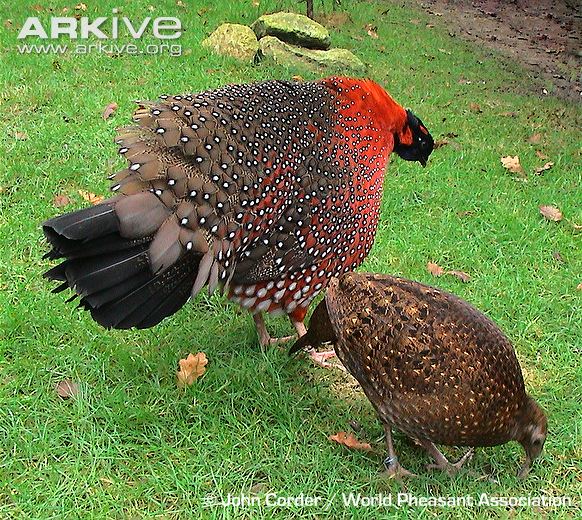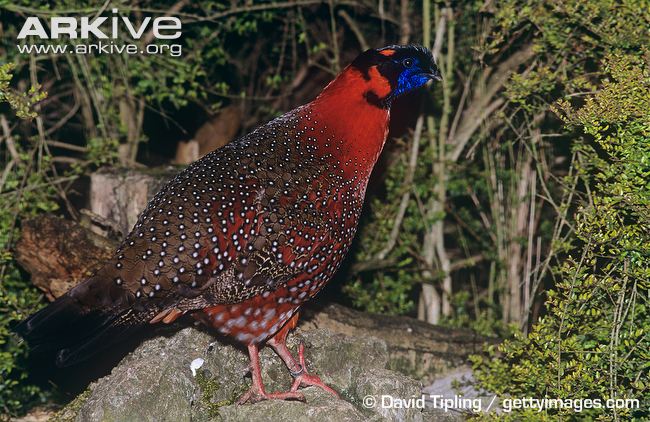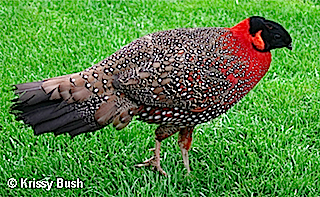
Tragopan satyra
SUBFAMILY
Phasianinae (Tribe Phasianini)
TAXONOMY
Meleagris satyra Linnaeus, 1829, Bengal = Sikkim, India. Monotopic.
OTHER COMMON NAMES
English: Crimson tragopan, Indian tragopan, crimson horned
pheasant; French: Tragopan satyre; German: Satyrtragopan;
Spanish: Tragopбn Sбtiro.
PHYSICAL CHARACTERISTICS
Male 26–28 in (67–72 cm); female 22–23 in (57–59 cm); male
3.5–4.6 lb (1.6–2.1 kg); female 2.2–2.6 lb (1.0–1.2 kg). Males
have deep red underparts, bare blue facial skin, and brown
plumage on lower back and rump; upperwing-coverts also
brown. Females are dull brown to rufous with bars and lanceshaped
markings.
DISTRIBUTION
Himalayas from northern India through Nepal, Sikkim, Bhutan
to western Arunachal Pradesh, including southeastern Tibet.
HABITAT
Temperate montane forest with dense understory at
5,900–14,100 ft (1,800–4,300 m).
BEHAVIOR
Usually in pairs or singles early in year, and family parties in
July–September; male’s repeated wailing call at dawn from
roost in April–June heralds breeding season.
FEEDING ECOLOGY AND DIET
Roots, bulbs, and invertebrates, and plucking leaves from cover
and trees.
REPRODUCTIVE BIOLOGY
Monogamous in captivity; usually crude stick nests are constructed
up to 20 ft (6 m) in trees; clutch size two to three; incubation
28 days.
CONSERVATION STATUS
Not threatened and still widespread, but hunted (except in
Bhutan).
SIGNIFICANCE TO HUMANS
Used as a flagship for central Himalayan forest conservation
campaigns.
Other popular Animals
Photo Gallery of - Satyr tragopan




 Animalia Life
Animalia Life